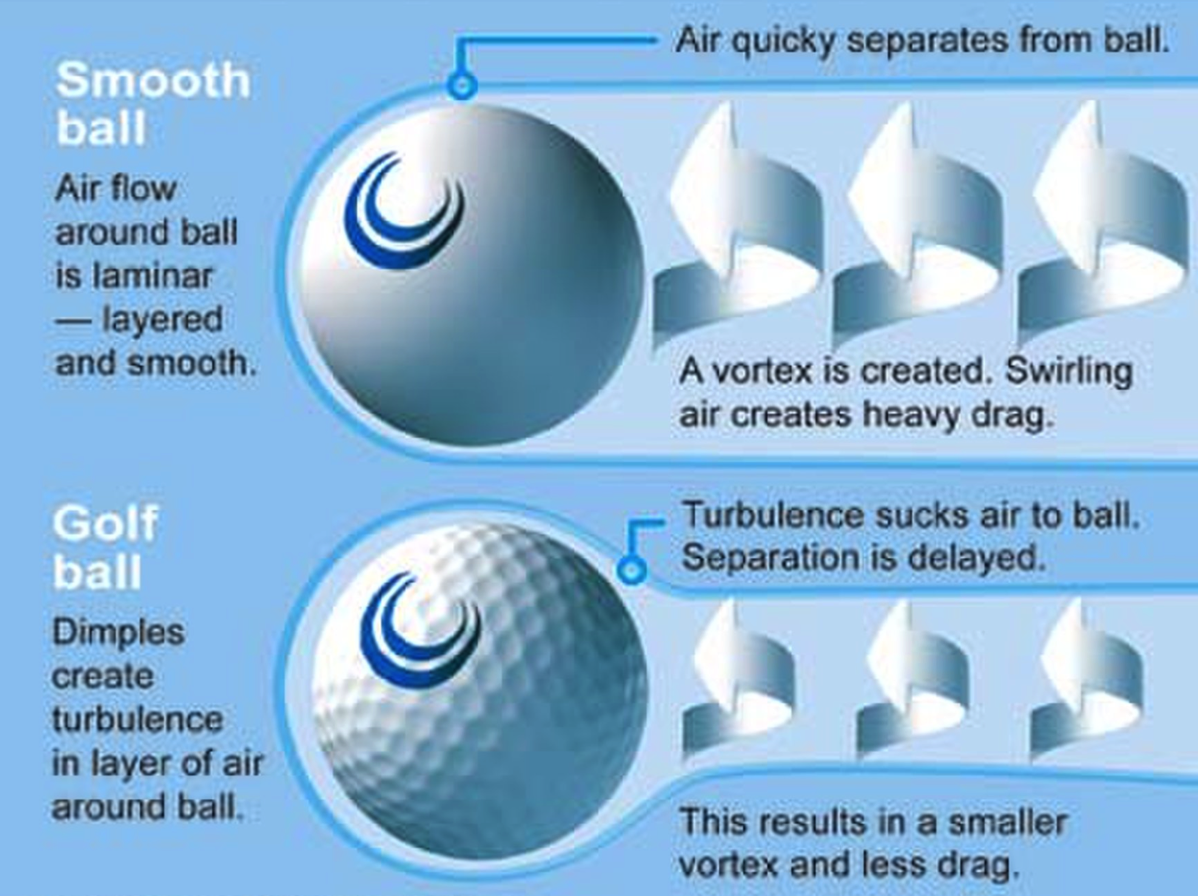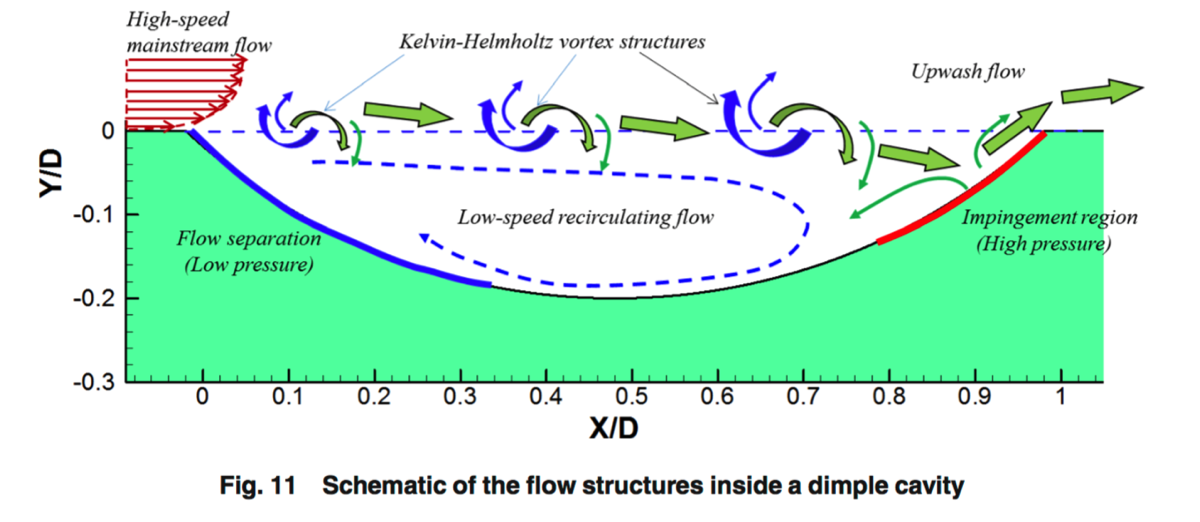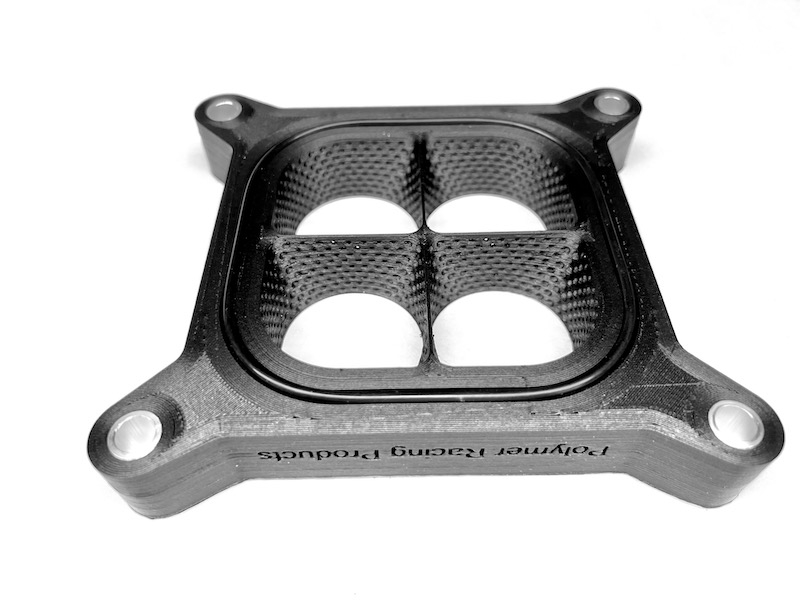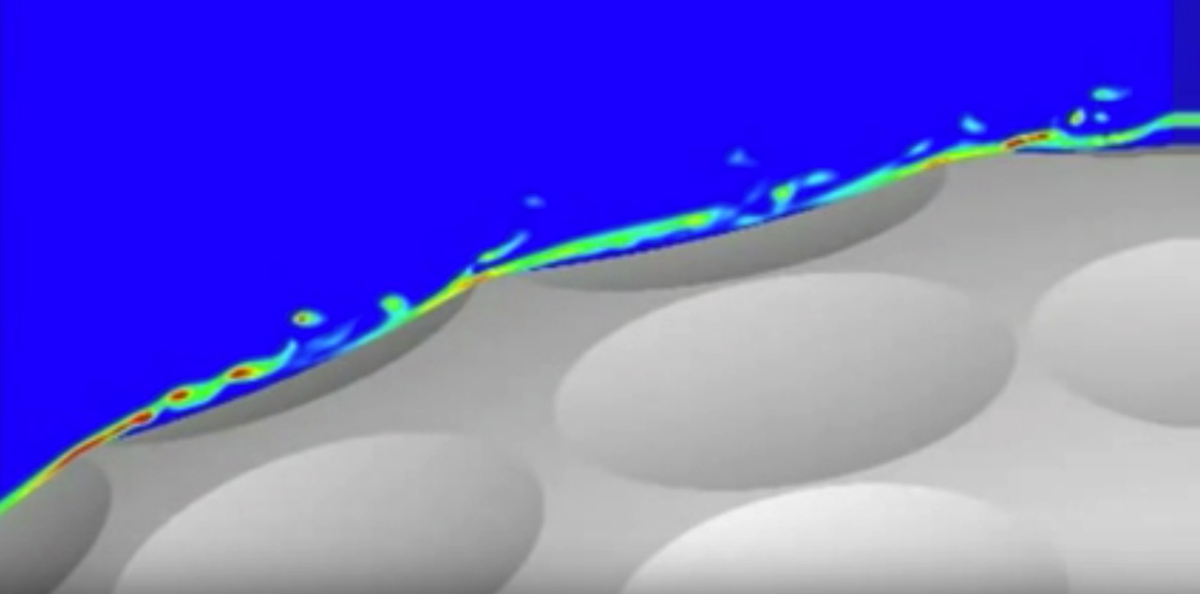
The description below shows how a smooth surface ball results is more drag than a dimpled ball.
The reason a smooth surface has more drag is a result of early separation of laminar flow. The dimples in a ball create turbulence in the boundary layer resulting in increased adhesion of air to the surface. This delays separation as air tries to circle around the ball, resulting less drag.
As air moves through the carburetor to the intake, the air has to make a transition. The dimples in the Polymer Racing Products spacer keep the air attached to the walls of the spacer preventing separation which ultimately results in more air flowing into the engine.
The turbulent boundary layer of the dimpled spacer also provide better air fuel mixing resulting in a consistent air fuel mixture ready to burn in the combustion chamber.
The reason a smooth surface has more drag is a result of early separation of laminar flow. The dimples in a ball create turbulence in the boundary layer resulting in increased adhesion of air to the surface. This delays separation as air tries to circle around the ball, resulting less drag.
As air moves through the carburetor to the intake, the air has to make a transition. The dimples in the Polymer Racing Products spacer keep the air attached to the walls of the spacer preventing separation which ultimately results in more air flowing into the engine.
The turbulent boundary layer of the dimpled spacer also provide better air fuel mixing resulting in a consistent air fuel mixture ready to burn in the combustion chamber.

The diagram below shows how vortex structures are generated in the dimple. These vortex's cause the flow to remain attached for a longer duration than a smooth surface and also allow for better mixing of the air and fuel.

Click on the image below to watch a video for a brief introduction of how dimples work.
Polymer Racing Products uses the same dimple technology in the critical space where air transitions between the bores of the carburetor into the intake manifold. Dimples in the walls of the spacer result in flow remaining attached during the highly sensitive area and provide more consistent air fuel mixtures.
See the dimples in the image below of a 1.0" 4150 carburetor spacer by Polymer Racing Products.
See the dimples in the image below of a 1.0" 4150 carburetor spacer by Polymer Racing Products.

